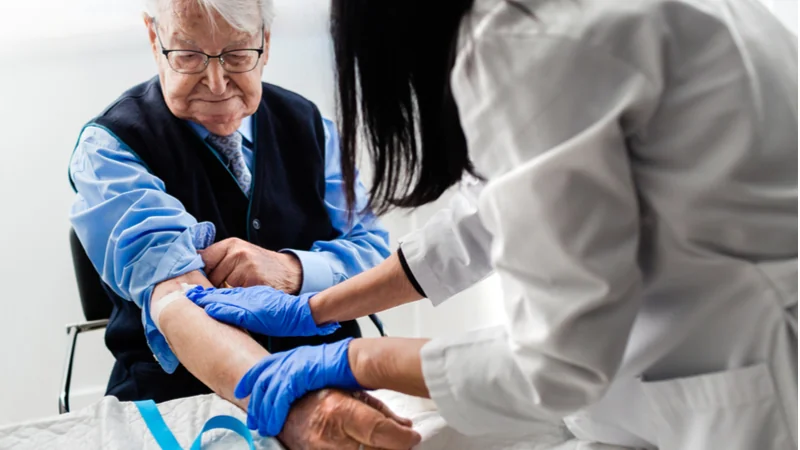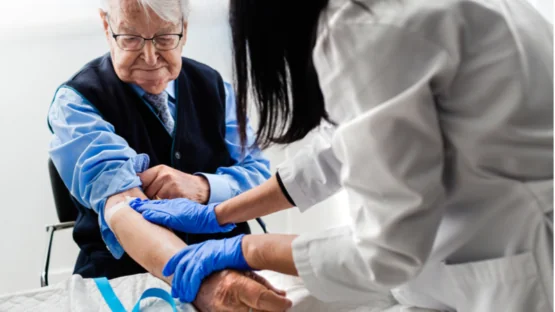Published in GeroScience, a groundbreaking study from the renowned Conboy lab has confirmed that plasma dilution leads to systemic rejuvenation against multiple proteomic aspects of aging in human beings.
Systemic molecular excess
This paper takes the view that much of aging is driven by systemic molecular excess. Signaling molecules, antibodies, and toxins, which gradually accumulate out of control, cause cells to exhibit the gene expression that characterizes older cells.
While the bloodstreams of old and young mice have been joined in previous experiments with substantial effects [1], this heterochronic parabiosis approach is neither feasible nor necessary for human beings. Instead, this paper focuses on therapeutic plasma exchange (TPE), a procedure that simply replaces blood plasma with saline solution and albumin. This procedure has already been used to dilute pathogenic, toxic compounds [2], the systemic problems associated with autoimmune and neurological disorders, including Alzheimer’s [3], and even the lingering aftereffects of viral infection [4].
Benefits for immune function
Once a month, a total of eight people had their blood biomarkers assessed and were then given TPE. Six individuals were considered old, while two were middle-aged. Some participants were assessed longer than others, and one patient was assessed over a total of five months.
While not everyone benefited as much or in the same ways, the data showed increases in many fundamental biomarkers of immune function. CD3, CD4, and CD8 T cells were increased. B cell counts generally improved, as did the counts of natural killer (NK) cells. Multiple ratios of immune cell counts were altered towards the ratios that young people have; most notably, macrophages, which accumulate in older people, were decreased. Meanwhile, p16, a biomarker of cellular senescence, and 8-OHdG, a biomarker of oxidative DNA damage, also declined.

Proteomic rejuvenation
The Conboy lab began this investigation by comparing the blood serum of young and old control donors. Of the 507 proteins analyzed, 72 were found to be significantly different between the two groups. As expected, the greatest changes were in proteins related to signal transduction and inflammatory response, along with proteins associated with the cellular self-destruction known as apoptosis; this is part of why older people’s senescent cells tend to linger.
While not all of the donors had older proteins in the same way, and the TPE participants were slightly different from the older control group participants at baseline, the data showed a signficant trend towards youthful expression. Principal component analysis showed this trend as well, placing them much closer to the youthful control groups.
Pathway analysis reveals anti-cancer benefits
The researchers then performed a bioinformatics analysis through the Kyoto Encylopedia of Genes and Genomes (KEGG). The pathways most affected by aging were those related to cytokines and rheumatoid arthritis, although, unexpectedly, cancer pathways were also strongly affected by aging and reduced by TPE.
Careful network analysis revealed one main component common to all the networks analyzed: toll-like receptor 4 (TLR4). TLR4, which increases with age, is involved in multiple fundamental signaling pathways, including pathways related to the immune system and to cancer. TPE was found to significantly decrease TLR4.
Other crucial biomarkers
The team also analyzed TDP43, a blood component that is associated with multiple neurodegenerative diseases [5] and increases with age. TPE significantly decreased TDP43 in each of the participants in a lasting way, some to approximately youthful levels. Other proteins associated with Alzheimer’s-related diseases were also significantly reduced.
The researchers took a look at the variances in protein expression (proteomic noise) in order to use it as a biomarker. This noise is difficult to analyze with such a small sample group, so they focused on proteins that greatly change in standard deviation from young people to old people, and from older people without cognitive disease to older people that do have it.
A total of ten proteins were found to be useful as biomarkers under this analysis. Very interestingly, the team’s calculations and analysis concluded that this noise shows that the biological age of people with cognitive disease is equivalent to 130 years old, an age to which no one has yet lived. Their results also show that this biomarker is dropped by decades in people who have undergone TPE.
Conclusion
While only eight people were in the treatment group of this study, its results are fairly clear. TPE stabilizes and modulates blood proteins, reduces dangerous proteins associated with neurodegeneration and cancer, rejuvenates multiple markers of gene expression, and reduces the age-related inflammation known as inflammaging. Whether or not these results will hold true in a larger study, however, remains to be seen, but there is strong evidence for such a study to be conducted.

Literature
[1] Conboy, I. M., Conboy, M. J., Wagers, A. J., Girma, E. R., Weissman, I. L., & Rando, T. A. (2005). Rejuvenation of aged progenitor cells by exposure to a young systemic environment. Nature, 433(7027), 760-764.
[2] Yilmaz, A. A., Can, Ö. S., Oral, M., Unal, N., Ayyildiz, E., Ilhan, O., & Tulunay, M. (2011). Therapeutic plasma exchange in an intensive care unit (ICU): a 10-year, single-center experience. Transfusion and Apheresis Science, 45(2), 161-166.
[3] Boada, M., López, O. L., Olazarán, J., Núñez, L., Pfeffer, M., Paricio, M., … & Páez, A. (2020). A randomized, controlled clinical trial of plasma exchange with albumin replacement for Alzheimer’s disease: Primary results of the AMBAR Study. Alzheimer’s & dementia, 16(10), 1412-1425.
[4] Kiprov, D. D., Herskowitz, A., Kim, D., Lieb, M., Liu, C., Watanabe, E., … & Conboy, I. M. (2021). Case Report: Therapeutic and immunomodulatory effects of plasmapheresis in long-haul COVID. F1000Research, 10.
[5] Jo, M., Lee, S., Jeon, Y. M., Kim, S., Kwon, Y., & Kim, H. J. (2020). The role of TDP-43 propagation in neurodegenerative diseases: integrating insights from clinical and experimental studies. Experimental & molecular medicine, 52(10), 1652-1662.




